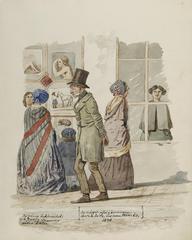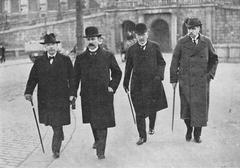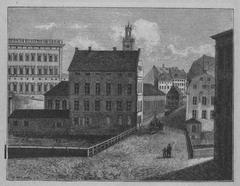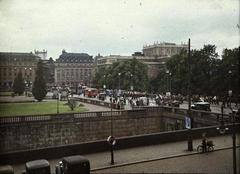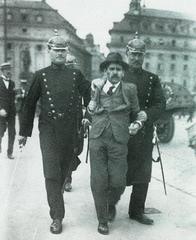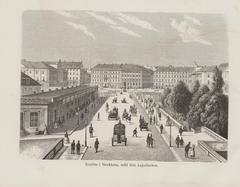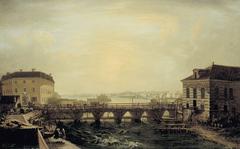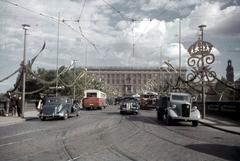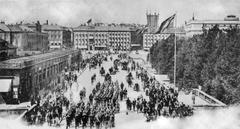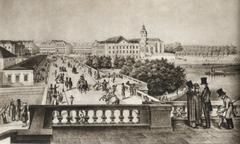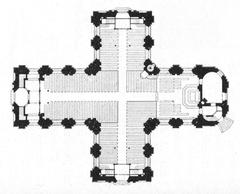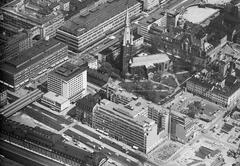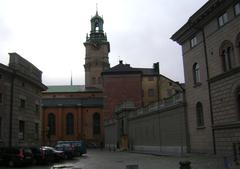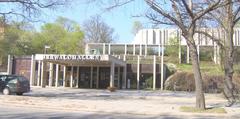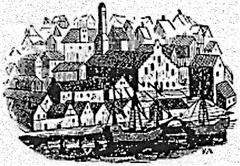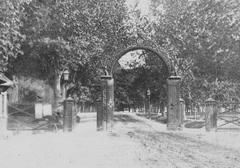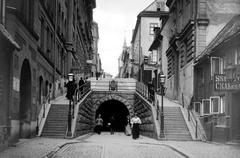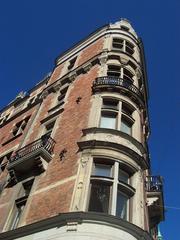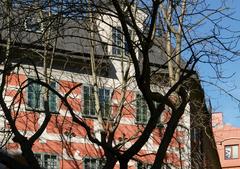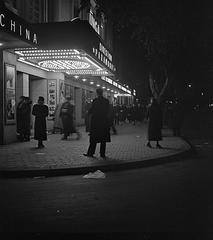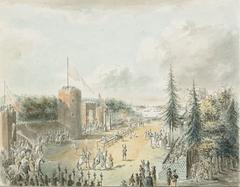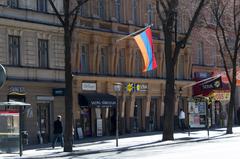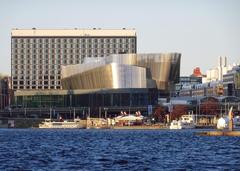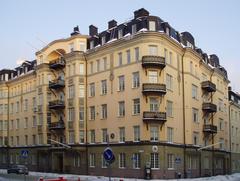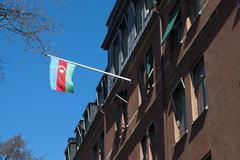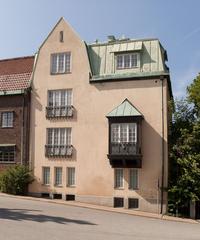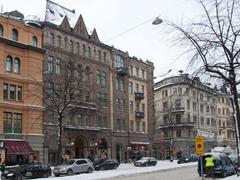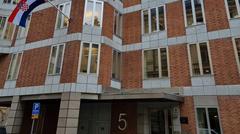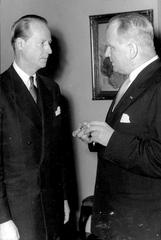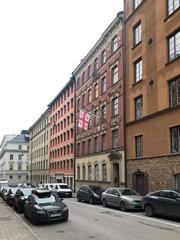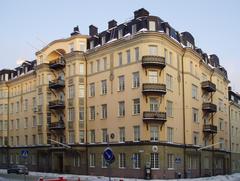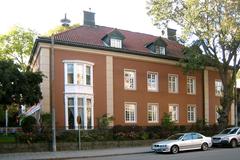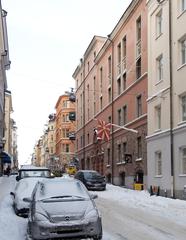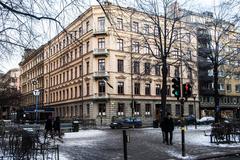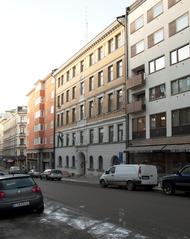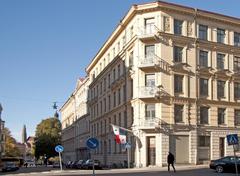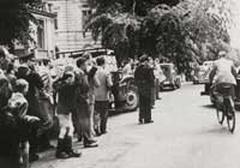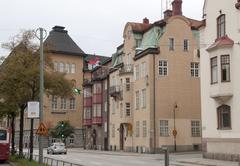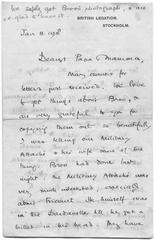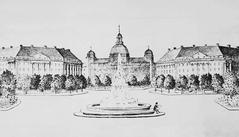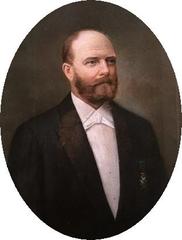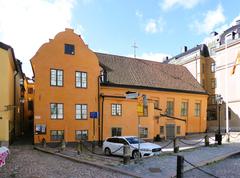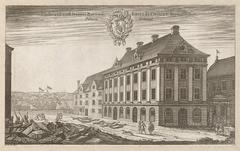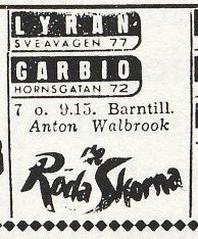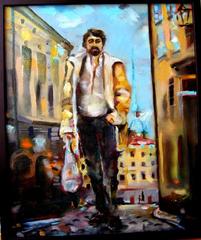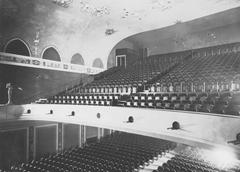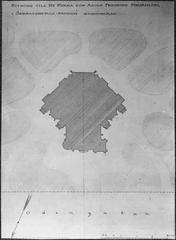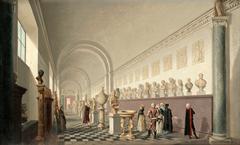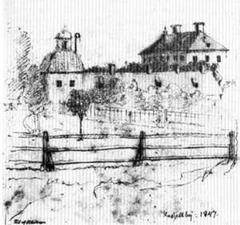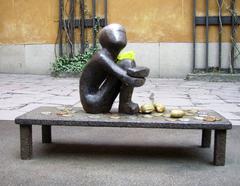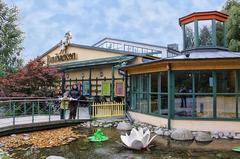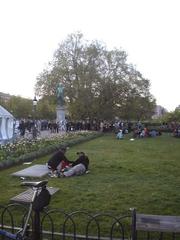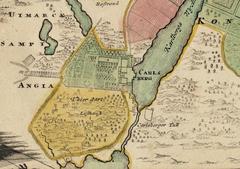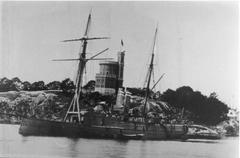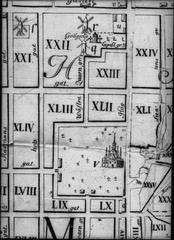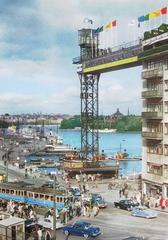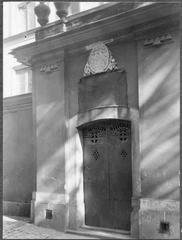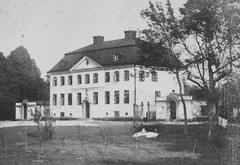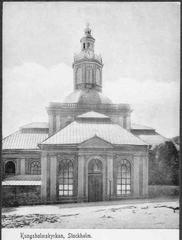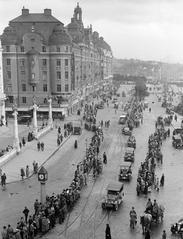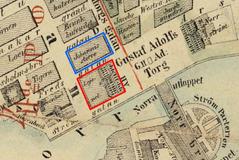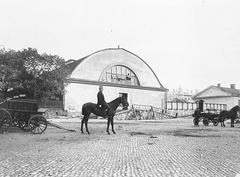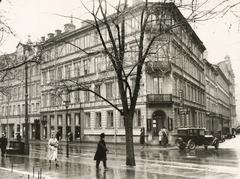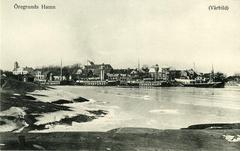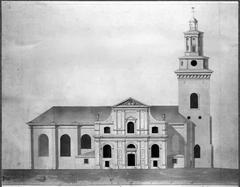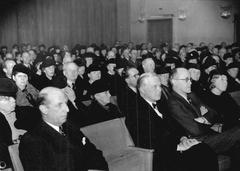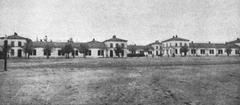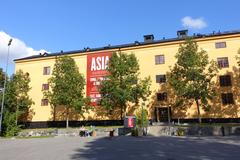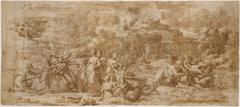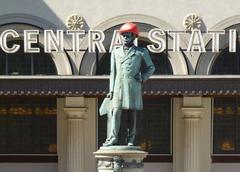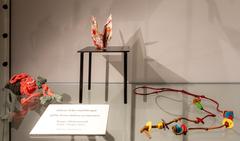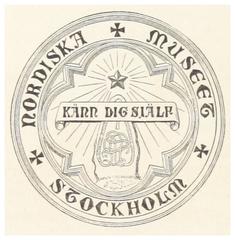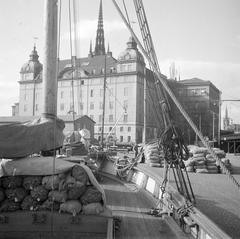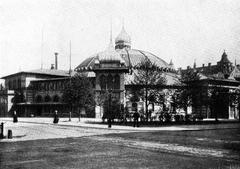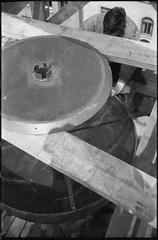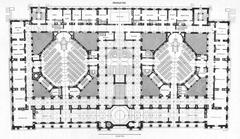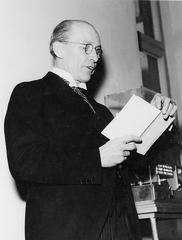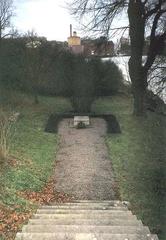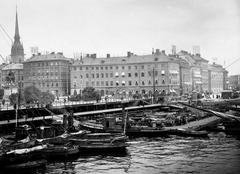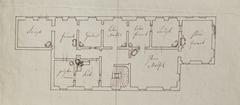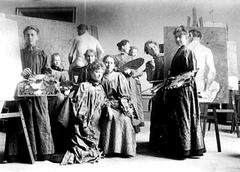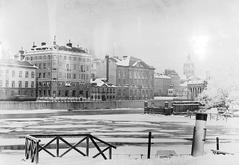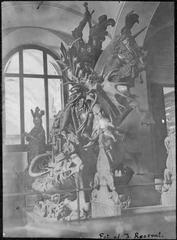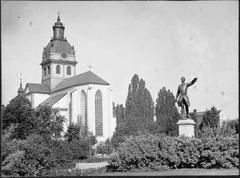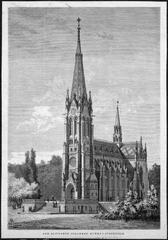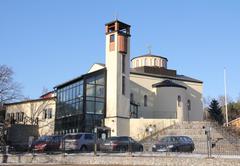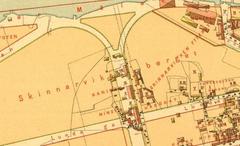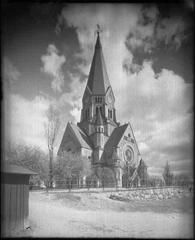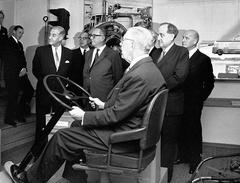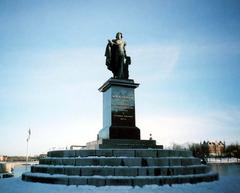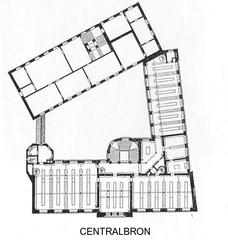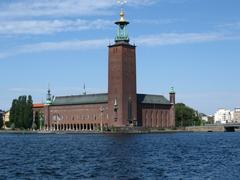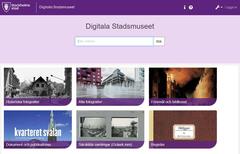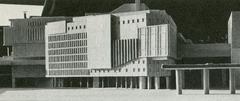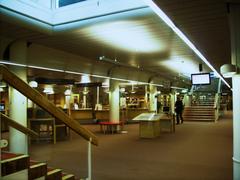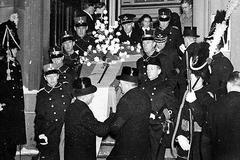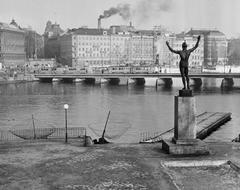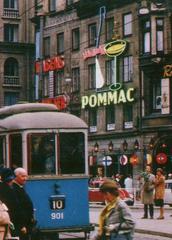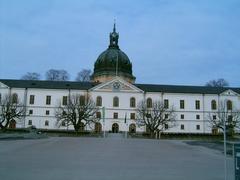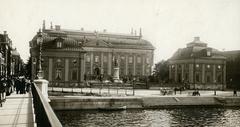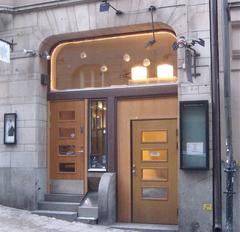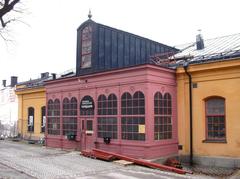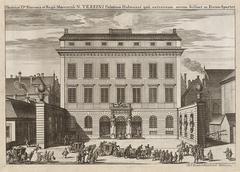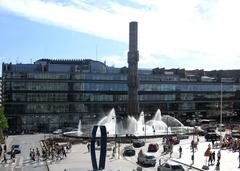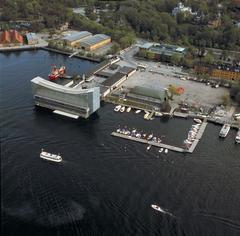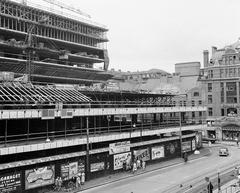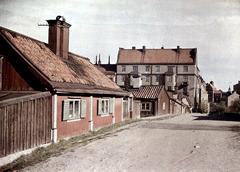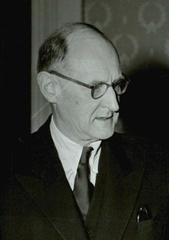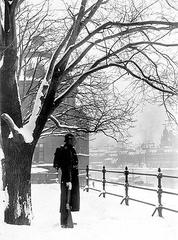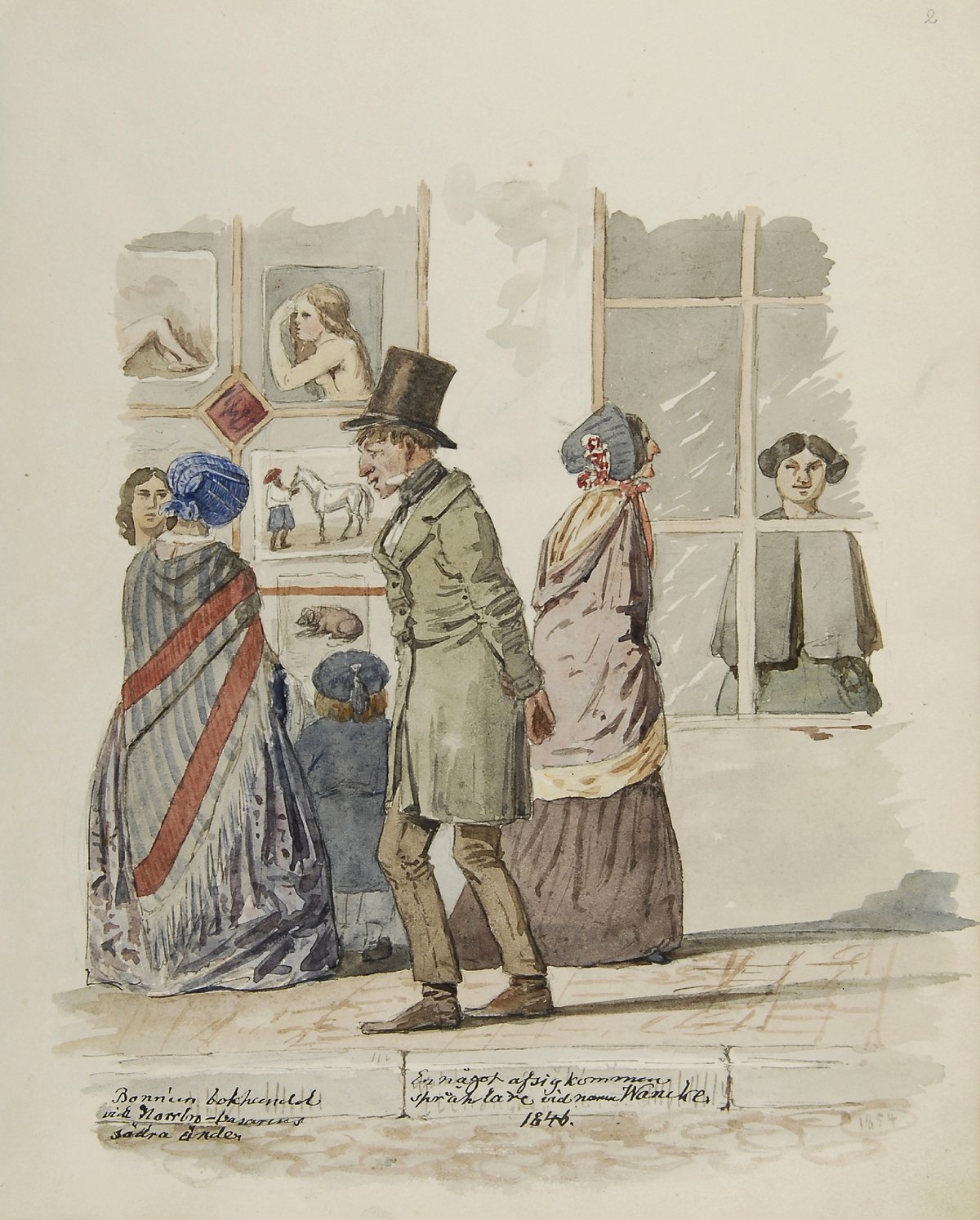
Comprehensive Guide to Visiting Norrbro, Stockholm, Sweden: History, Significance, Visitor Tips, and Everything Tourists Need to Know for a Memorable Experience
Date: 24/07/2024
Introduction
Norrbro, translating to “North Bridge” in English, stands as one of Stockholm, Sweden’s most significant historical and architectural marvels. Spanning Norrström, this iconic bridge connects the northern front of the Royal Palace to Gustav Adolfs torg, passing over Helgeandsholmen in front of the Riksdag building. Designed by the city architect Erik Palmstedt in a neoclassical style, Norrbro’s construction marked a pivotal moment in Stockholm’s urban development. Completed in two phases between 1797 and 1806, it replaced two older wooden bridges with a robust stone structure, showcasing the architectural advancements of its time (Wikipedia).
Beyond its architectural significance, Norrbro has served as a crucial link in Stockholm’s infrastructure and a focal point for social and cultural activities. It was the first street in the city to be paved and furnished with separate pavements, setting a new standard for urban infrastructure. The bridge’s innovative construction techniques, introduced by Palmstedt, were a significant advancement in bridge engineering (Structurae). Over the centuries, Norrbro has witnessed numerous historical events and continues to be a vital part of Stockholm’s urban fabric, making it a must-visit site for both history enthusiasts and casual travelers alike (Stockholmskallan).
Table of Contents
- Introduction
- Historical Background
- Visitor Information
- Travel Tips
- Nearby Attractions
- Accessibility
- FAQ
- Conclusion
Historical Background
Early History and Construction
Designed by the city architect Erik Palmstedt (1741–1803) in a neoclassical style, Norrbro stands as a testament to the architectural advancements of its time (Wikipedia). The construction of Norrbro marked a pivotal moment in Stockholm’s urban development. It was one of the first bridges in the city to be built entirely of stone, replacing two older wooden bridges, Slaktarehusbron and Vedgårdsbron. The northern portion of Norrbro, supported by three arches, was completed in 1797, while the southern portion, supported by a single arch, was finished in 1806. The bridge was officially inaugurated in 1807 (Stockholmskallan).
Architectural Innovations
Erik Palmstedt introduced a novel method for the foundation work of Norrbro. The base of a pillar was constructed on a barge with tall walls, which was then filled with water to sink to the piling on the bottom. The walls of the barge were detached from its floor, which consequently became the bed of the pillar while the walls were reused. This innovative technique was a significant advancement in bridge construction at the time (Structurae).
Historical Significance
Norrbro’s construction was not just a feat of engineering but also a symbol of Stockholm’s growth and modernization. It was the first street in the city to be paved and furnished with separate pavements, setting a new standard for urban infrastructure. The bridge’s width of 19 meters and its span exceeded all other bridges in Stockholm for a long period, making it an unparalleled structure in the city (Wikipedia).
Medieval and Renaissance Connections
The history of Norrbro extends back to the medieval period. During the Middle Ages, a bridge existed over Norrström, albeit slightly more to the west, connecting Västerlånggatan in Gamla stan. By the 1700s, the area where Norrbro now stands was home to two different bridges - Slaktarhusbron and Vedgårdsbron. These bridges were demolished to make way for the new stone bridge, which was part of a broader vision to modernize the city’s infrastructure (Stockholmskallan).
Renovations and Modern-Day Relevance
In the early 2000s, Norrbro underwent significant renovations to preserve its structural integrity and historical value. The renovation project, which cost approximately 175 million kronor, culminated in a re-inauguration ceremony on January 23, 2010, where Crown Princess Victoria laid the final stone. This event highlighted the bridge’s enduring importance to Stockholm’s heritage and its role in the city’s contemporary landscape (Stockholmskallan).
Archaeological Discoveries
The construction and subsequent renovations of Norrbro have also led to significant archaeological discoveries. During the excavation work for the Riksdag building in the late 1970s, archaeologists uncovered remnants of the old medieval city wall, which Gustav Vasa had ordered to be demolished in the 1500s. These findings provided valuable insights into Stockholm’s medieval past and the historical context in which Norrbro was built (Stockholmskallan).
Cultural and Social Impact
Norrbro has played a crucial role in Stockholm’s social and cultural life. It has been a site for public gatherings, celebrations, and even protests. The bridge’s strategic location, connecting key landmarks such as the Royal Palace and the Riksdag building, has made it a focal point for both locals and tourists. Over the years, Norrbro has witnessed numerous historical events and continues to be a vital part of Stockholm’s urban fabric (Wikipedia).
Future Prospects
As Stockholm continues to evolve, Norrbro remains a symbol of the city’s rich history and architectural heritage. Efforts to preserve and maintain the bridge ensure that it will continue to be a significant landmark for future generations. The bridge’s historical and cultural importance, combined with its architectural elegance, makes it a must-visit site for anyone exploring Stockholm (Stockholmskallan).
Visitor Information
Visiting Hours
Norrbro itself is an open public space and can be visited at any time. However, the surrounding attractions such as the Royal Palace and the Riksdag building have specific visiting hours. It is advisable to check their official websites for the most current information.
Tickets
There is no ticket required to walk on Norrbro. However, if you plan to visit nearby attractions like the Royal Palace or the Riksdag building, you may need to purchase tickets. Guided tours of these attractions often include a walk across Norrbro.
Guided Tours
Several guided tours are available that include Norrbro as part of their itinerary. These tours provide in-depth historical context and are a great way to fully appreciate the significance of the bridge.
Travel Tips
How to Get There
Norrbro is centrally located in Stockholm and is easily accessible by public transportation. The nearest metro station is Gamla stan, and several bus lines also stop nearby. If you prefer walking, many of Stockholm’s main attractions are within a short distance.
Best Times to Visit
The best time to visit Norrbro is during the spring and summer months when the weather is pleasant. Early mornings and late afternoons are ideal for avoiding large crowds and capturing stunning photographs.
Local Tips
- Wear comfortable walking shoes as you will likely be exploring other nearby attractions.
- Bring a camera to capture the beautiful views from the bridge.
- Consider joining a guided tour for a more enriching experience.
Nearby Attractions
The Royal Palace
Located at the northern end of Norrbro, the Royal Palace is one of the largest palaces in Europe and a must-visit site.
Gustav Adolfs torg
At the southern end of Norrbro, this historic square is named after King Gustav II Adolph and is surrounded by notable buildings including the Royal Opera.
Riksdag Building
Situated on Helgeandsholmen, this is the seat of the Swedish Parliament and offers guided tours that provide insight into Sweden’s political history.
Accessibility
Norrbro is relatively flat and wide, making it accessible for visitors with disabilities. However, some surrounding areas may have cobblestone streets and slight inclines. It is advisable to check specific accessibility information for nearby attractions.
FAQ
Do I need a ticket to visit Norrbro?
No, Norrbro is a public bridge and does not require a ticket to visit.
What are the visiting hours for Norrbro?
Norrbro is open to the public 24/7, but nearby attractions have specific hours.
Are there guided tours available?
Yes, several guided tours include Norrbro as part of their itinerary. These tours often cover nearby historical sites as well.
Is Norrbro accessible for visitors with disabilities?
Yes, Norrbro is generally accessible, but it’s advisable to check the accessibility of surrounding areas and attractions.
Conclusion
Norrbro is not just a bridge but a historical monument that encapsulates the architectural, cultural, and social evolution of Stockholm. Its construction marked a significant advancement in engineering, and its continued preservation underscores its importance to the city’s heritage. Visitors to Stockholm can appreciate Norrbro not only for its functional role but also for its historical and cultural significance. Be sure to include this iconic bridge in your travel itinerary and explore the rich history that Stockholm has to offer (Structurae).
Visiting Norrbro offers a unique opportunity to delve into the rich history and architectural heritage of Stockholm. Whether you’re exploring the surrounding attractions like the Royal Palace, Gamla Stan, and the Riksdag building, or simply enjoying a scenic stroll across the bridge, Norrbro promises a memorable experience. The continued efforts to preserve and maintain this iconic structure ensure that it will remain a significant landmark for future generations. Be sure to include Norrbro in your travel itinerary and immerse yourself in the historical and cultural tapestry of Stockholm (Stockholmskallan).
References
- Wikipedia. (n.d.). Norrbro. Retrieved from https://en.wikipedia.org/wiki/Norrbro
- Structurae. (n.d.). Norrbro. Retrieved from https://structurae.net/en/structures/norrbro
- Stockholmskallan. (n.d.). Norrbro. Retrieved from https://stockholmskallan.stockholm.se/teman/Stockholmsplatser/norrbro/
